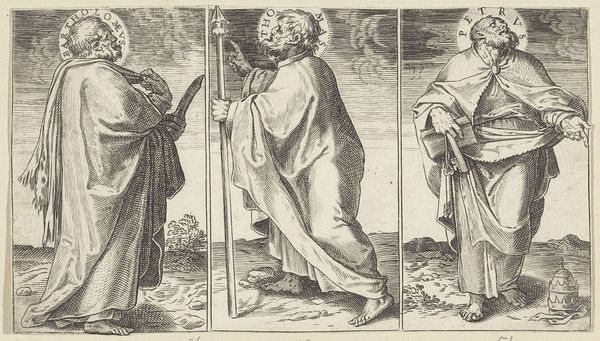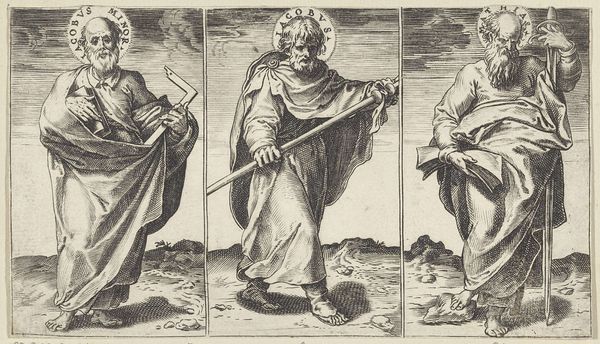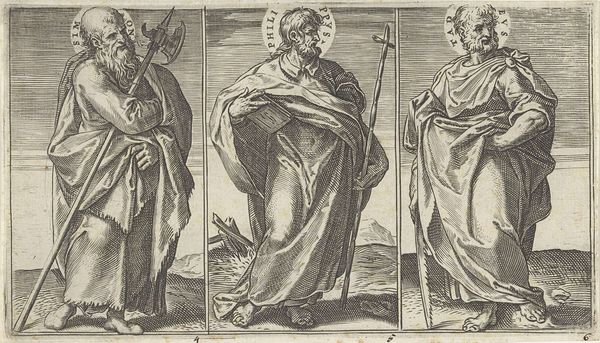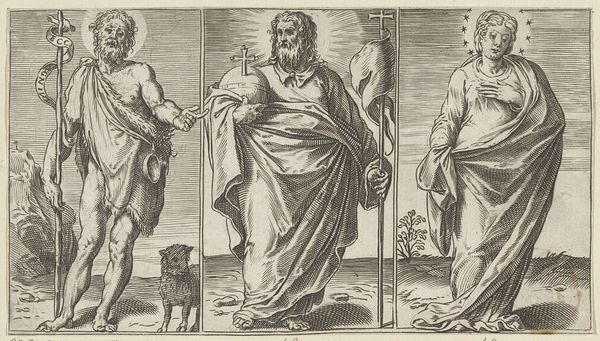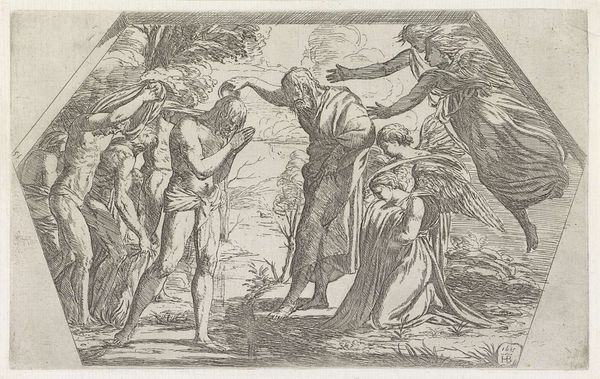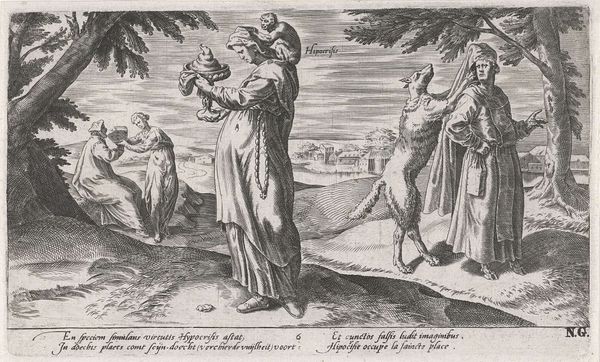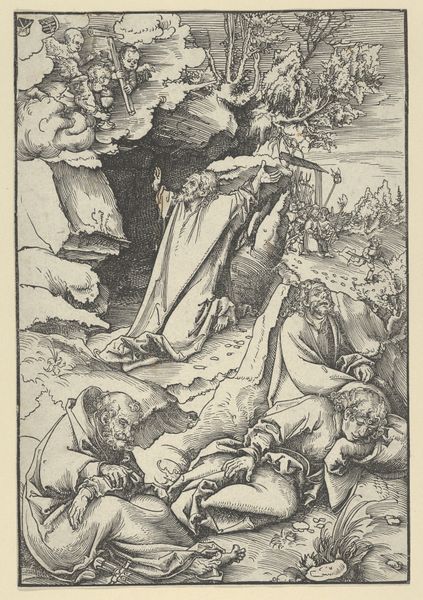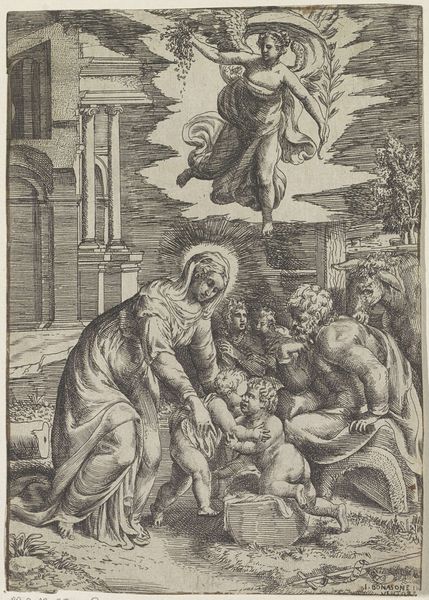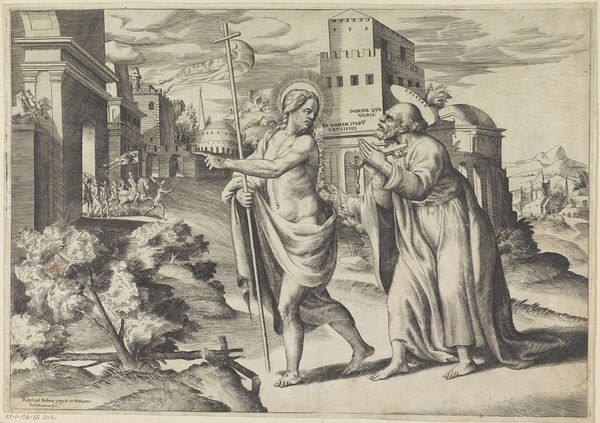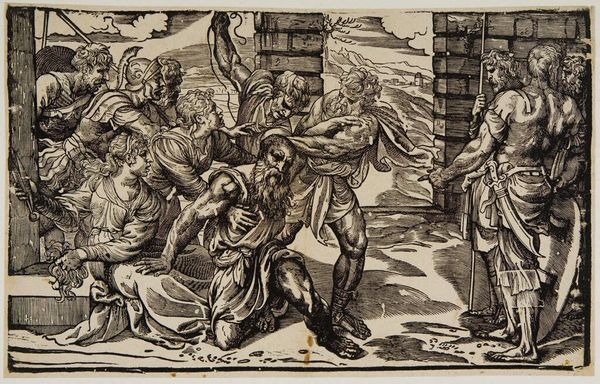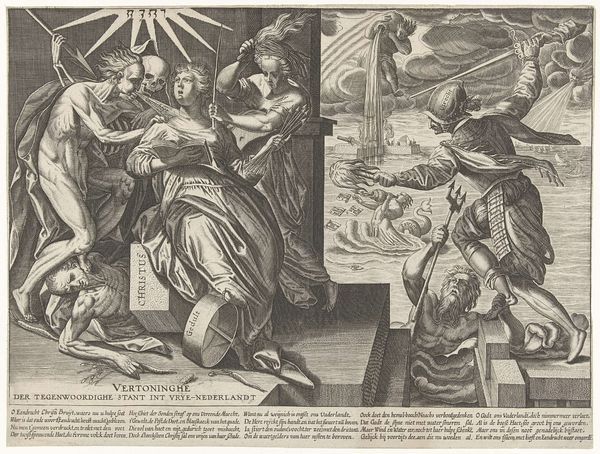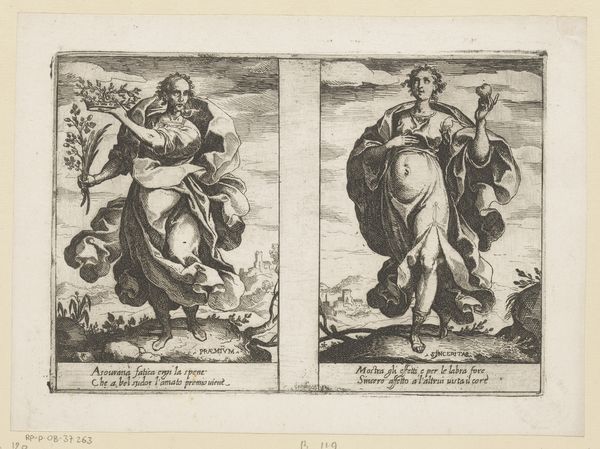
print, engraving
#
portrait
# print
#
figuration
#
line
#
history-painting
#
engraving
Dimensions: height 106 mm, width 189 mm
Copyright: Rijks Museum: Open Domain
Editor: So, this is "Matteüs, Andreas en Johannes" by Agostino Carracci, made in 1583. It’s an engraving, so a print. I’m immediately struck by how somber the figures appear, each enclosed in their own panel. What do you see in this piece, especially in how the figures are represented? Curator: I'm intrigued by the visual language employed here. Look at Matthew holding what seems to be a money bag, and John with the poisoned chalice. These aren’t just identifiers; they’re visual keys unlocking deeper narratives of these figures’ lives and legacies. Notice also the cross that Andrew carries – this is a clear symbol of martyrdom and sacrifice. These images evoke collective memory of their suffering. Editor: So, these objects aren't just props, they are loaded with meaning? Curator: Precisely! Each object tells a story deeply ingrained in cultural understanding. Consider how the placement of these figures within separate panels contributes to the overall impact. What emotions or interpretations does this separation evoke in you? Editor: It makes me think of isolation, maybe even their individual struggles, even though they are together in the same artwork. Curator: Indeed! And doesn't that isolation, in turn, enhance the emotional resonance? These figures become both universal symbols and individual sufferers, embodying aspects of human experience we can still connect to today. Editor: I hadn't thought about the artwork in quite that way before. It’s interesting how these early prints served not just as art, but also as a way to preserve cultural memory through visual cues. Curator: Exactly. And each element is deliberately chosen, continuing through generations, these visual symbols become shorthand for complex narratives, offering us insight into cultural values and psychological underpinnings that have stood the test of time.
Comments
No comments
Be the first to comment and join the conversation on the ultimate creative platform.
